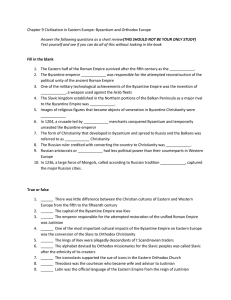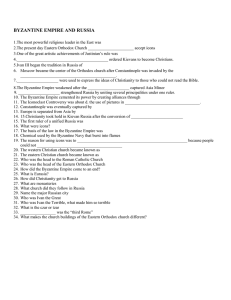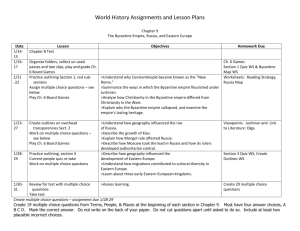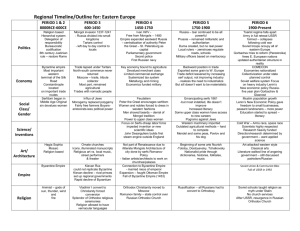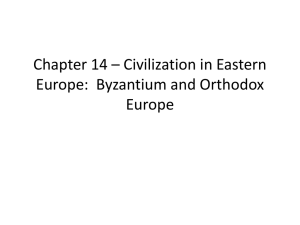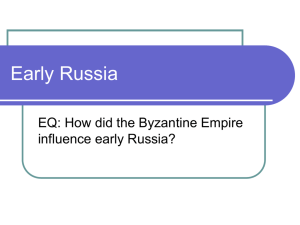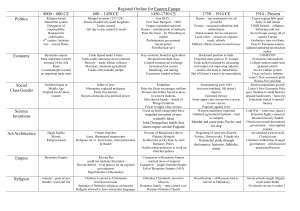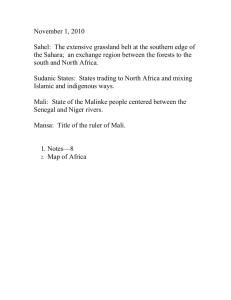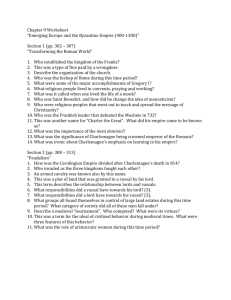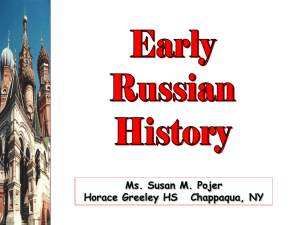Chapter 10 - Emergence of Russian Identity
advertisement
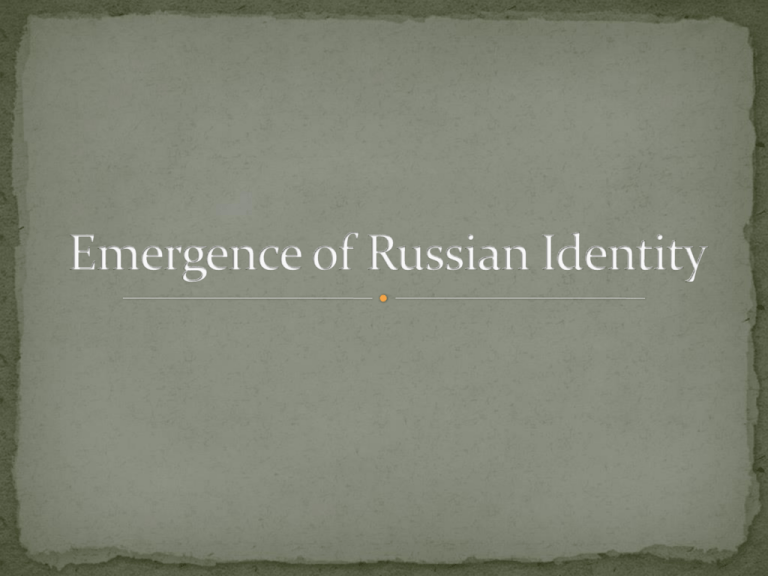
Largely flat, steppe-like land to northeast of Byzantine empire Northern latitudes meant land was not strong for farming Greater reliance on trade Crossed by many prominent rivers Good for trade Large population of Slavs Common to much of eastern Europe Largely an agrarian people Vikings moved into area after being lured by trade Vikings became early ruling class “Rus” were Slavic peoples ruled by Viking nobles Important trading partner with Byzantine empire City of Kiev was important trade outpost for both Silk Road and Mediterranean (by way of Constantinople) trade Predecessor of more modern Russian identity Became base of Eastern Orthodox Christianity after collapse of Constantinople Eastern Orthodox religion became central to Russian identity Geographic location made it heavily influenced by Byzantine Empire Eastern Orthodox (Byzantine) missionaries were very active in Rus region Missionaries Cyril and Methodius created Cyrillic alphabet to help spread Christianity into region Became the basis for modern slavic/Russian language (252 million people) In 980 Vladimir I became Grand Prince of Kiev Converted Christianity and made it religion of his state Imitated culture of Byzantine Empire Churches, art, architecture, Cyrillic alphabet Destroyed all pagan statues After conversion by Vladimir, spread of Christianity was slow Center of power was Kiev until 1200’s, Moscow from 1300’s on Agrarian and Craftsmen based Strong patriarchy Women could be sold in to slavery Upper class women were isolated in certain areas of the home Feudal form of government even stronger than Western Europe Serfs (peasant class) even more restricted than W. Europe Kievan Russia declined by 1100 Attacks by nomadic neighbors (Huns, Mongols/Tartars) Decline of Byzantine empire reduced trade revenues Fell under rule of Mongol (aka Tartar) in 13th century Mongols were tolerant of Christianity Russian leader Ivan III ends Mongol rule and moves Russian capital to Moscow Moscow became major center of Christendom after collapse of Byzantine empire Eastern Orthodox church moved here after fall of Constantinople Moscow claimed to be “3rd Rome”

